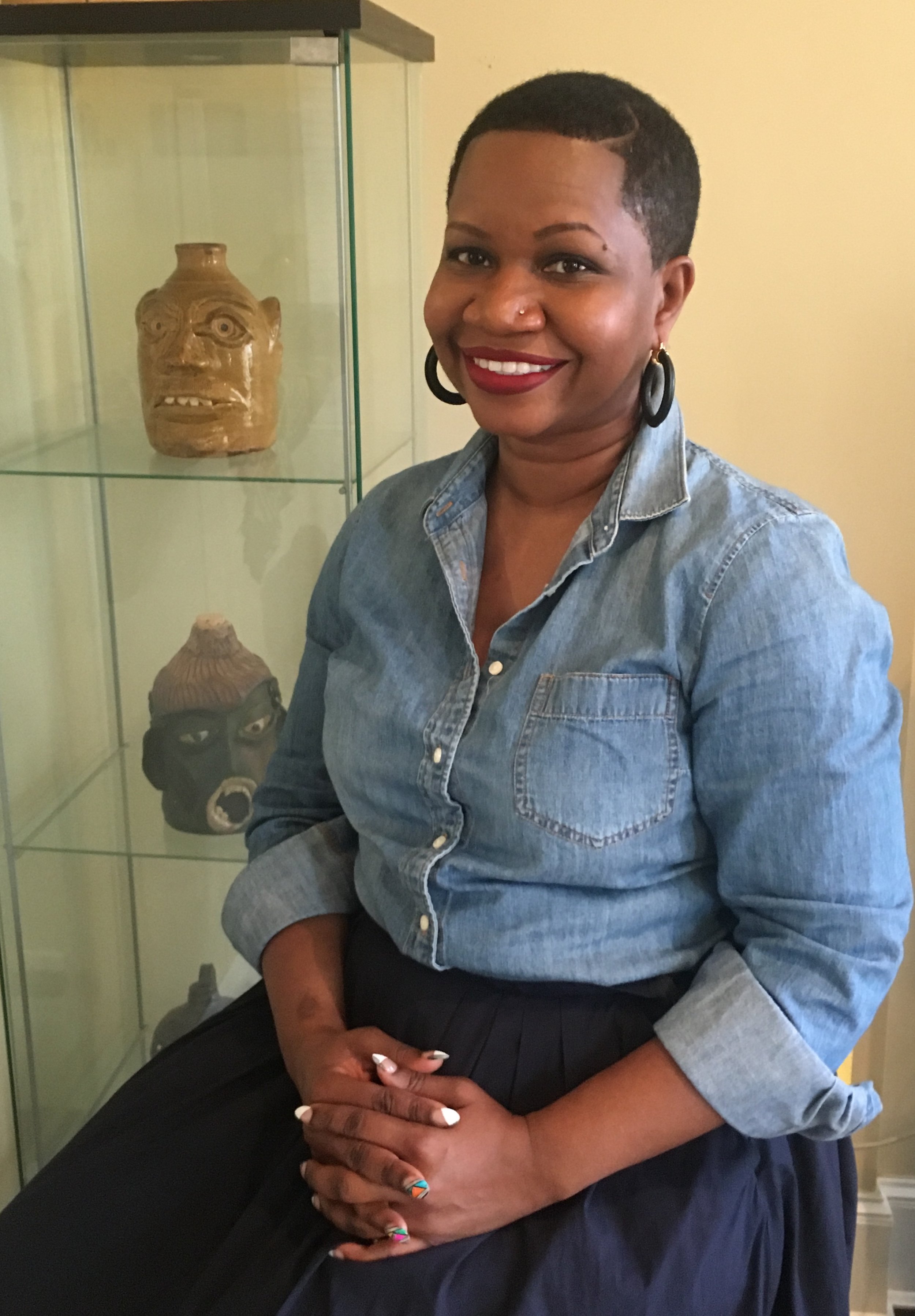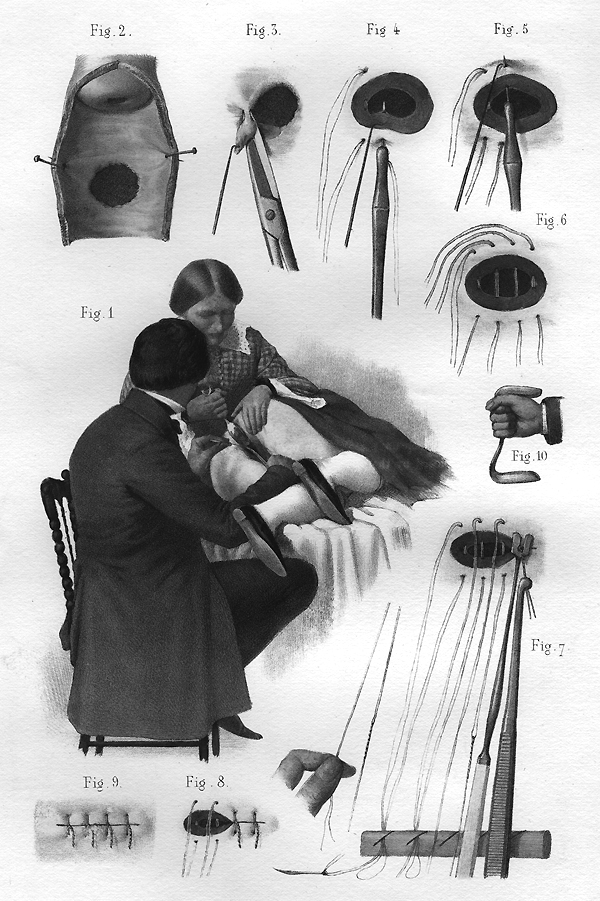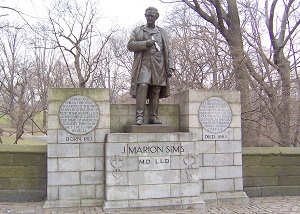On March 2, following the 2:00 pm matinee performance of Behind the Sheet, the powerful new drama by Charly Evon Simpson, everyone is encouraged to stay for our fifth talkback about the historical and scientific context of the play, as well as the many issues it addresses. On the panel this week, we have Dr. Briana Walton, director of Female Pelvic Medicine and Reconstructive Surgery at the AAMC Women’s Center for Pelvic Health, and literary historian Gabrielle Foreman, the Ned B. Allen Professor of English and Professor of History and Black American Studies at the University of Delaware, for a conversation moderated by research scholar and Behind the Sheet actor, Naomi Lorrain.
Behind the Sheet confronts the history of a great medical breakthrough by telling the forgotten story of a community of enslaved black women who involuntarily enabled the discovery. In 1840s Alabama, Philomena assists a doctor—her owner—as he performs experimental surgeries on her fellow slave women, trying to find a treatment for the painful post-childbirth complications known as fistulas. Reframing the origin story of modern gynecology, the play dramatizes how these women supported each other, and questions who, and what, history remembers.
The World Premiere of Behind the Sheet is this year’s mainstage production of the EST/Sloan Project, EST's partnership with the Alfred P. Sloan Foundation to develop new plays "exploring the worlds of science and technology," an initiative now in its twentieth year.
About the Panelists
Dr. Briana Walton has served as the Director of Female Pelvic Medicine and Reconstructive Surgery at Anne Arundel Medical Center (AAMC) since its inception in 2008. She is recognized as an expert in robotic/minimally invasive surgery and treatment of fibroids, urinary incontinence, and pelvic organ prolapse. In the field of robotics, she has personally performed 500 plus pelvic reconstructive surgeries while developing programmatic growth around quality, cost containment, and safety. Before starting the Women’s Center for Pelvic Health at Anne Arundel Medical Center, Dr. Walton was the Director of Benign Gynecology at Washington Hospital Center. She has also served as adjunct assistant professor of Obstetrics and Gynecology at Uniformed Services University of the Health Sciences and an assistant professor of Obstetrics and Gynecology and Urology at Georgetown University School of Medicine. Internationally, she uses her clinical skills and strengths in the treatment of health care disparities. She has worked in Ghana, Niger and most recently Rwanda where the program focuses on obstetrical fistula repairs, but the group has developed other clinical programs to treat the victims of trauma and genocide. She has served as board member and team leader for the International Organization for Women and Development.
P. Gabrielle Foreman is a teacher and scholar of African American studies and nineteenth-century literary history who has published extensively on issues of racial reform and slavery with a focus on the past’s continuing hold on the world we inhabit today. In her current manuscript The Art of DisMemory: Historicizing Slavery in Poetry, Performance and Material Culture, she traces the story of an enslaved Connecticut man named Fortune who was dissected and skeletonized by his enslaver, Dr. Preserved Porter. As the state abolished slavery, the Porter family turned their chattel property into intellectual property, passing down Fortune’s bones through generations of family doctors before donating his bones to a regional museum where he was the most popular exhibit until the 1970s. Our generation knows his story because the museum commissioned poet Marilyn Nelson to write about him. She and Ysaye Barnwell also created a manumission requiem with Nelson’s poetry serving as lyrics. Gabrielle teaches at the University of Delaware where she is the Ned B. Allen Professor of English and Professor of History and Africana Studies. She is also the founding director of the Colored Conventions Project, which brings decades of nineteenth-century Black activism to digital life.
About the Moderator
Naomi Lorrain plays Philomena in the world premiere production of Behind the Sheet by Charly Evon Simpson at the Ensemble Studio Theatre. Naomi is a New York City-based actor, playwright and scholar. She received her B.A. in the History of Science, History of Medicine and African American Studies from Yale University and her M.F.A. in Acting from NYU Tisch School of the Arts. She works part-time as a Scholars-in-Residence Research Assistant at the Schomburg Center for Research in Black Culture. Her plays include A Trojan Woman’s Tale (Villa La Pietra), The Queen of Macon County (The National Black Theatre), Shelfies (The 52nd Street Project), The Big O (Villa La Pietra), and Rigor Mortis (NYU Tisch). Recent theater credits include What to Send Up When It Goes Down (Movement Theatre Company), Stained (The Amoralist), Song for a Future Generation (Williamstown Theatre Festival), Restoration Comedy (The Flea), and Daughter of Lot (Edinburgh Fringe Festival). TV: “Orange Is the New Black” (Netflix), “Elementary” (CBS), “The Good Fight” (CBS), “Madam Secretary” (CBS). As a Scholars-in-Residence Research Assistant, she has worked on several books, including Dispossessed Lives: Enslaved Women, Violence, and the Archive by Marisa J. Fuentes. At Yale, her senior essay “Plan B: The Collision of the Birth Control Movement and the Uplift Movement Viewed Through Works of Angelina Weld Grimké” received both the Lily Rosen Prize in Women's Health for best essay that contributes to knowledge about women’s health and the William Pickens Prize for outstanding senior essay in the field of African and African American Studies.
Behind the Sheet began previews on January 9 and runs through March 10 at EST. You can purchase tickets here.















































